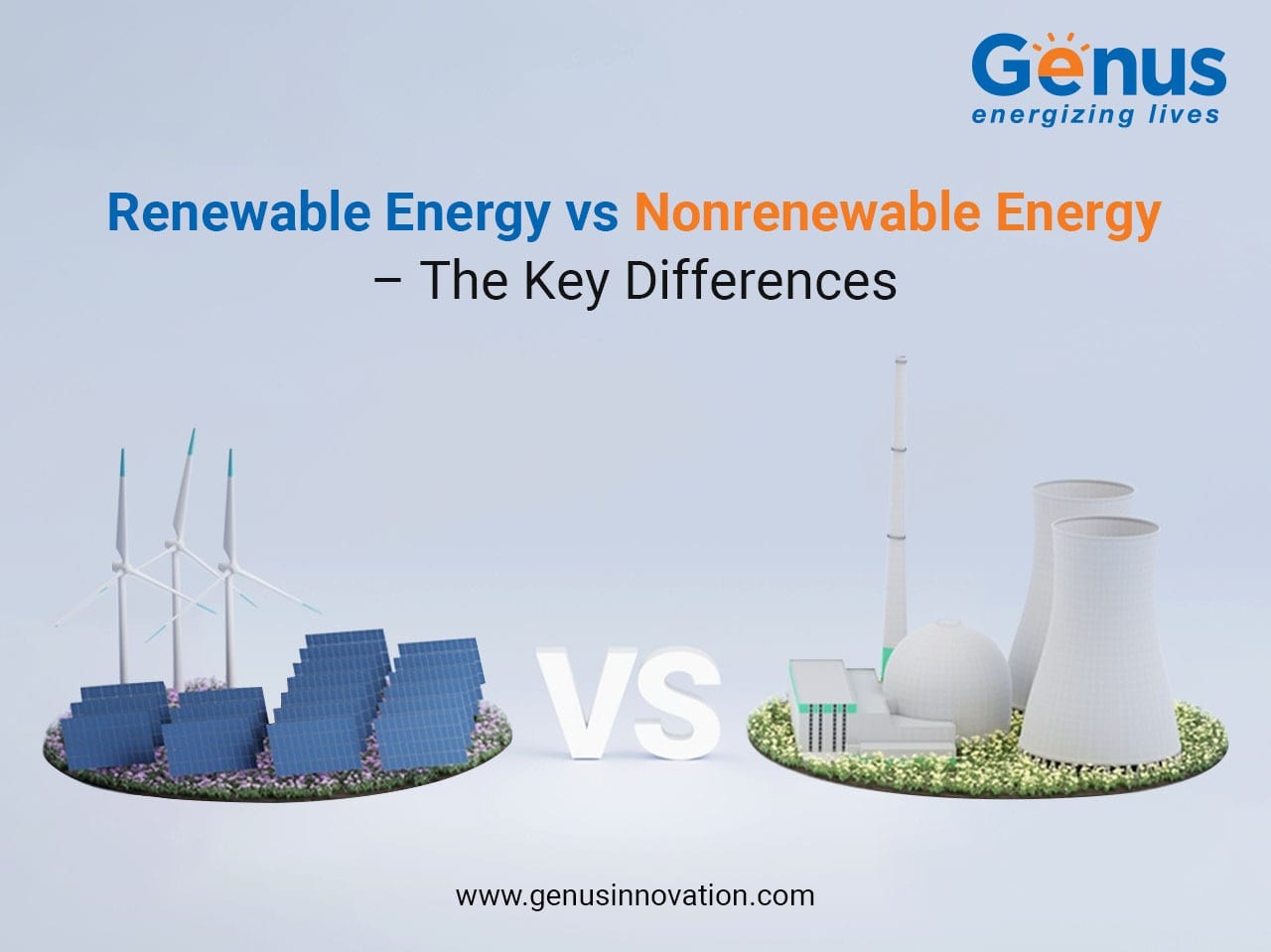Green energy, clean energy, and sustainable energy – these are just a few of the many terms used to describe renewable energy. The variety of names highlights the growing importance and urgency around transitioning to this type of power source. To truly understand the value of these resources, it’s essential to grasp the difference between renewable energy vs. nonrenewable energy.
Here are some key differences that set renewable and nonrenewable energy apart.

What Are Renewable Energy Resources?
Renewable energy comes from sources that are naturally replenished and won’t run out, even with continuous use. Common examples include solar, wind, hydro, geothermal, and biomass energy. These resources are abundant and can be harnessed without depleting the Earth's natural reserves.
Solar energy, in particular, is becoming more popular due to advances in technology like solar panels and solar charge controllers, which help manage energy flow efficiently.
What Are Non-Renewable Energy Resources?
Non-renewable energy sources are those that cannot be easily replaced once they are used up. Fossil fuels such as coal, oil, and natural gas fall into this category. These resources take millions of years to form, and their consumption rate far exceeds their natural regeneration speed.
Renewable Energy vs. Nonrenewable Energy
Below are some of the main differences between renewable energy vs. nonrenewable energy:
- Environmental Impact
Renewable energy sources have a much smaller environmental footprint. For example, solar and wind energy produce little to no greenhouse gases during operation. Solar panels convert sunlight directly into electricity, while wind turbines use wind to generate power—both are clean and sustainable options.
In contrast, nonrenewable energy sources like coal and oil release significant amounts of carbon dioxide and other harmful pollutants when burned. This contributes to air pollution, climate change, and other environmental issues.
If you're looking for eco-friendly solutions, consider using Genus’ tubular battery to store and use renewable energy efficiently.
- Cost
When comparing renewable energy vs. nonrenewable energy, cost is an important factor. Initially, renewable energy systems may require a higher investment due to installation and manufacturing costs. However, over time, these systems offer long-term savings because they rely on free or low-cost fuel sources like sunlight and wind.
As technology improves, the cost of renewable energy continues to drop. At Genus, we offer competitive prices on solar batteries, making it easier for individuals and businesses to go green.
- Time to Replenish
One of the biggest drawbacks of nonrenewable energy is how slowly it is replenished. Coal and oil, for instance, take thousands of years to form. Meanwhile, renewable resources like sunlight, wind, and water are constantly available, making them more reliable and sustainable in the long run.
This makes renewable energy not only better for the environment but also more economically viable in the future.
So, here you have it—the key differences between renewable energy vs. nonrenewable energy.
Also Read: Green Energy: Definition, Importance, Types, & Differences Explained
Wrapping Up
While renewable energy may have a higher initial cost, the long-term benefits—such as lower operating costs, reduced environmental impact, and energy independence—are unmatched by nonrenewable sources.
If you're ready to make the switch to a cleaner, more sustainable energy system, Genus Innovation is here to help. Our range of high-quality solar products ensures a smooth transition to renewable energy. Connect with us today to learn how you can start saving money and protecting the planet at the same time.
special steel,steel specialties,specialty steel
Jiangyou ChongxinSpecial Metal Materials Co., Ltd. , https://www.zhongxindiesteel.com
